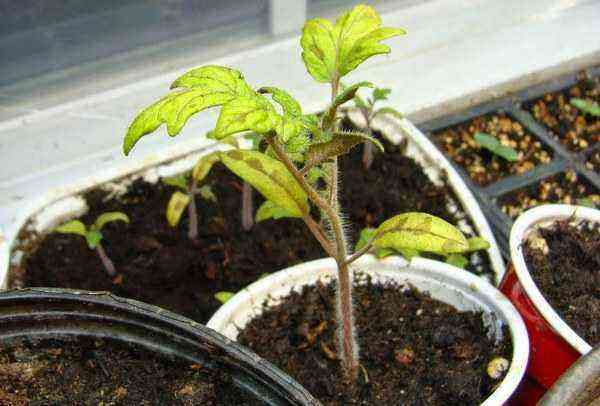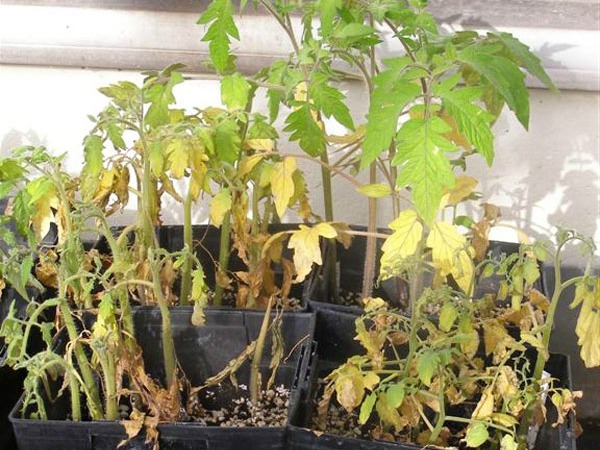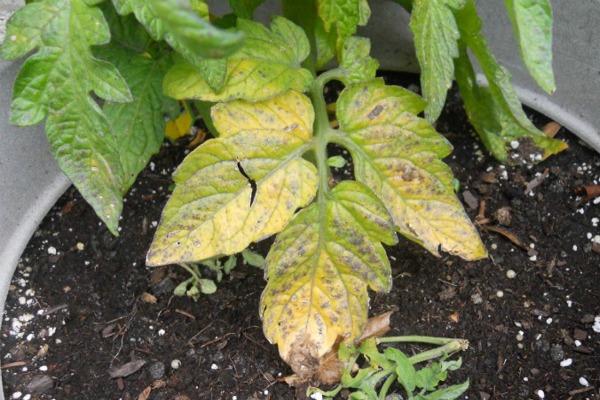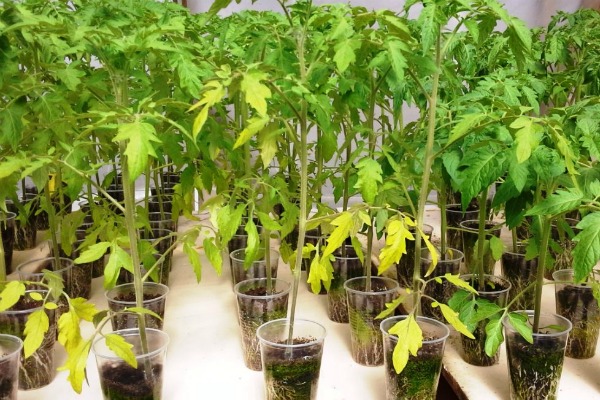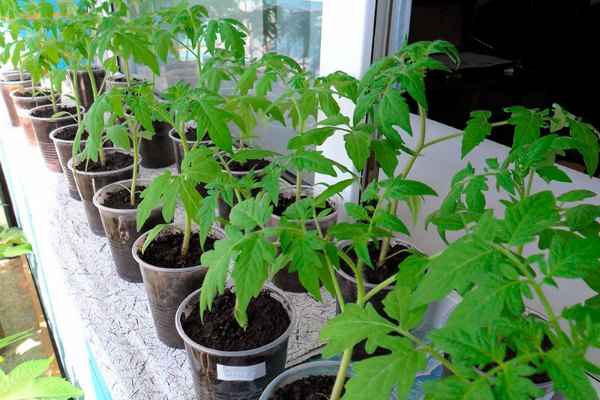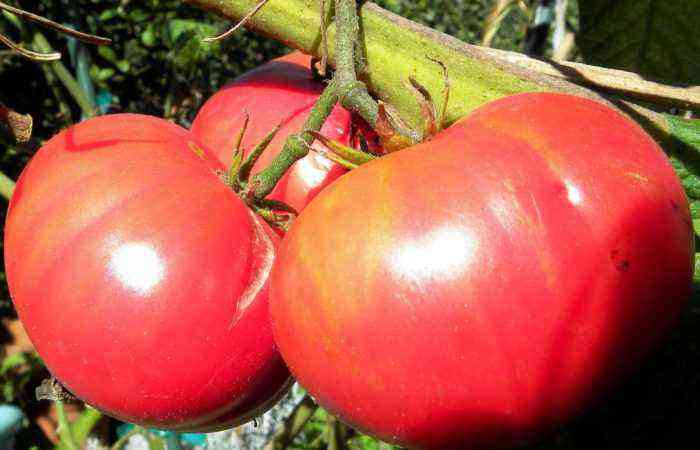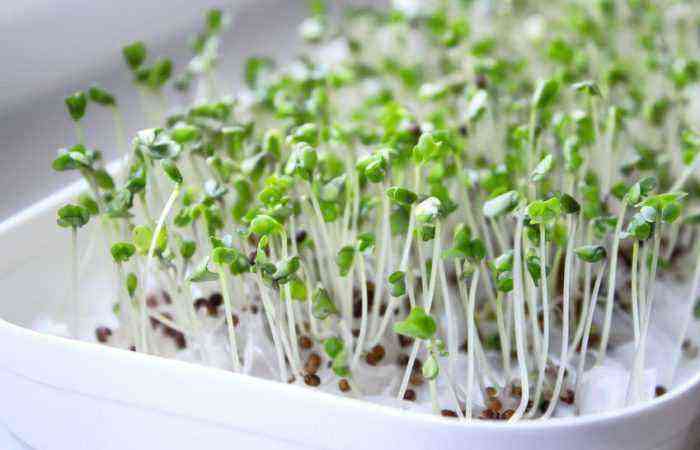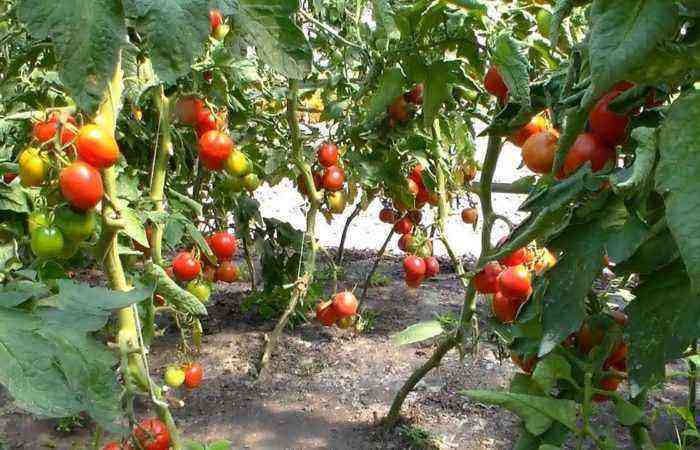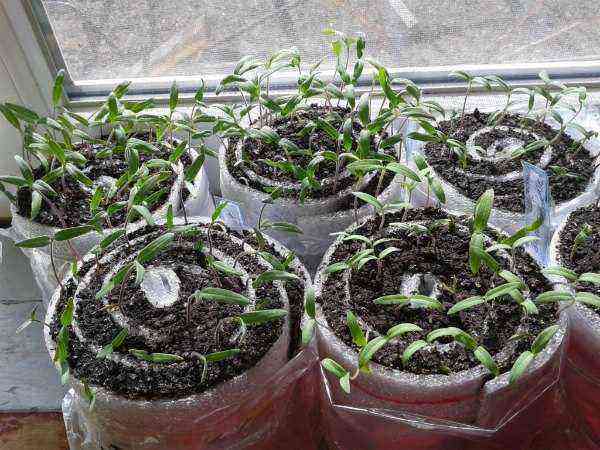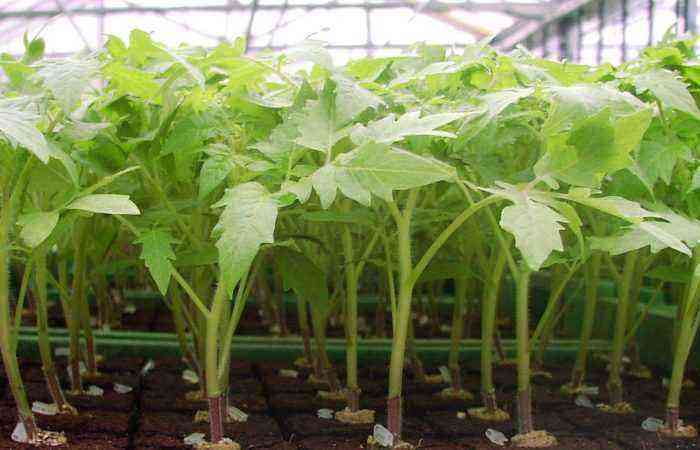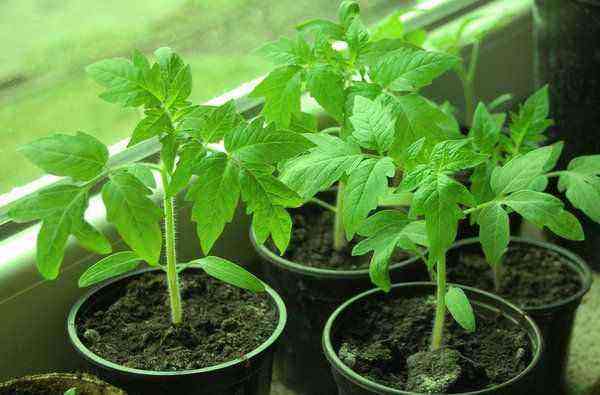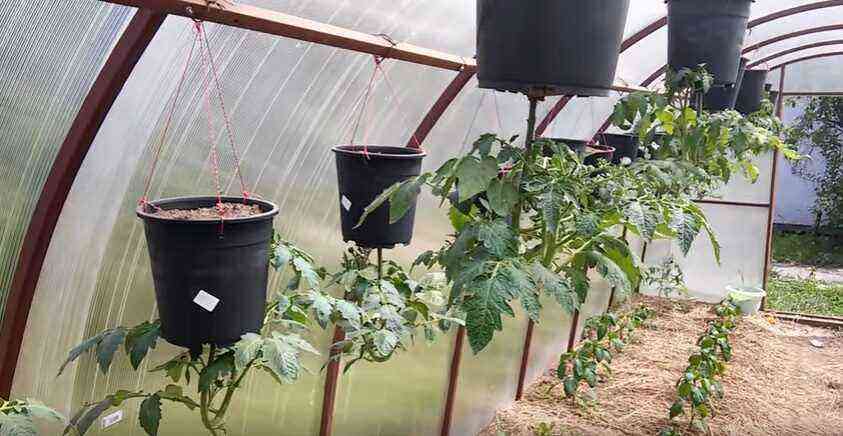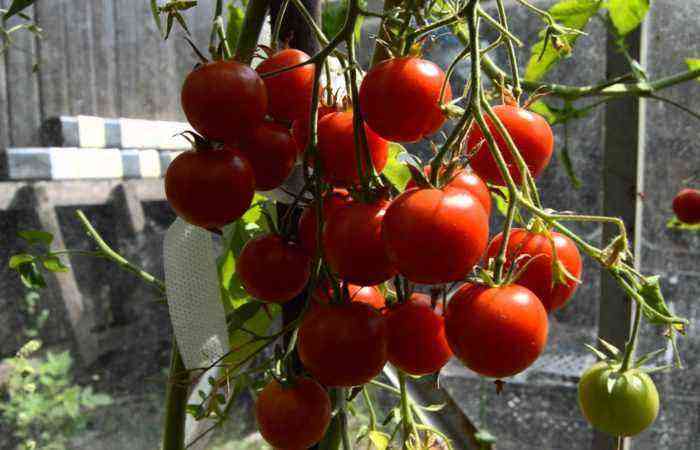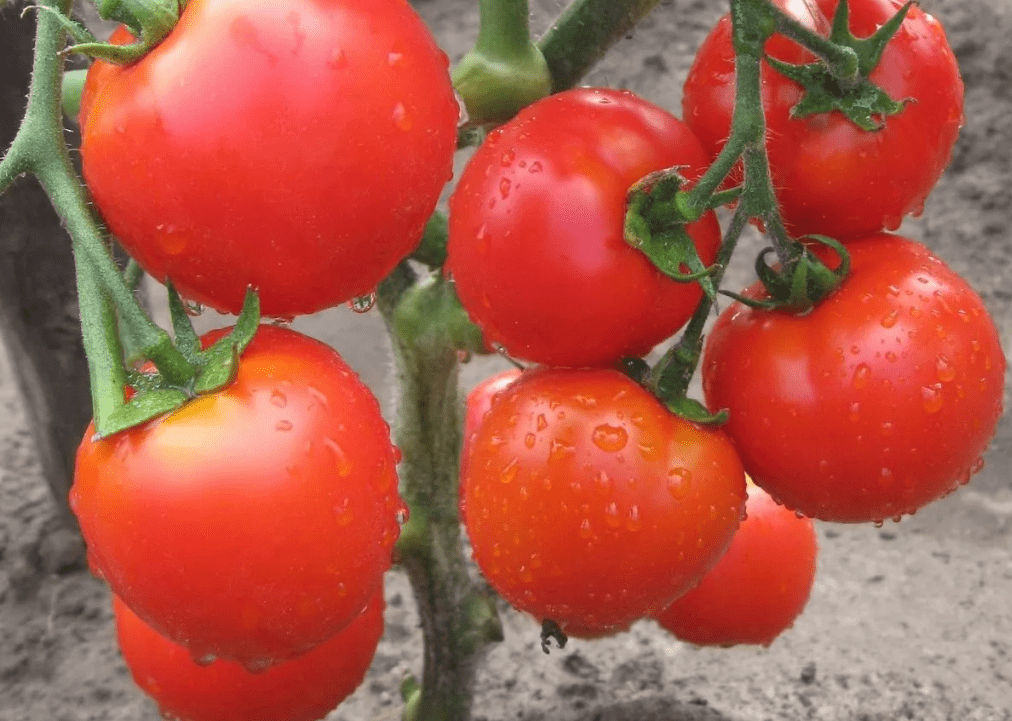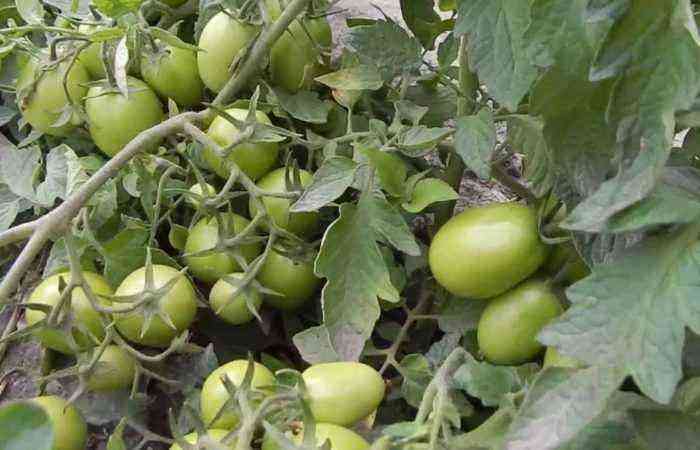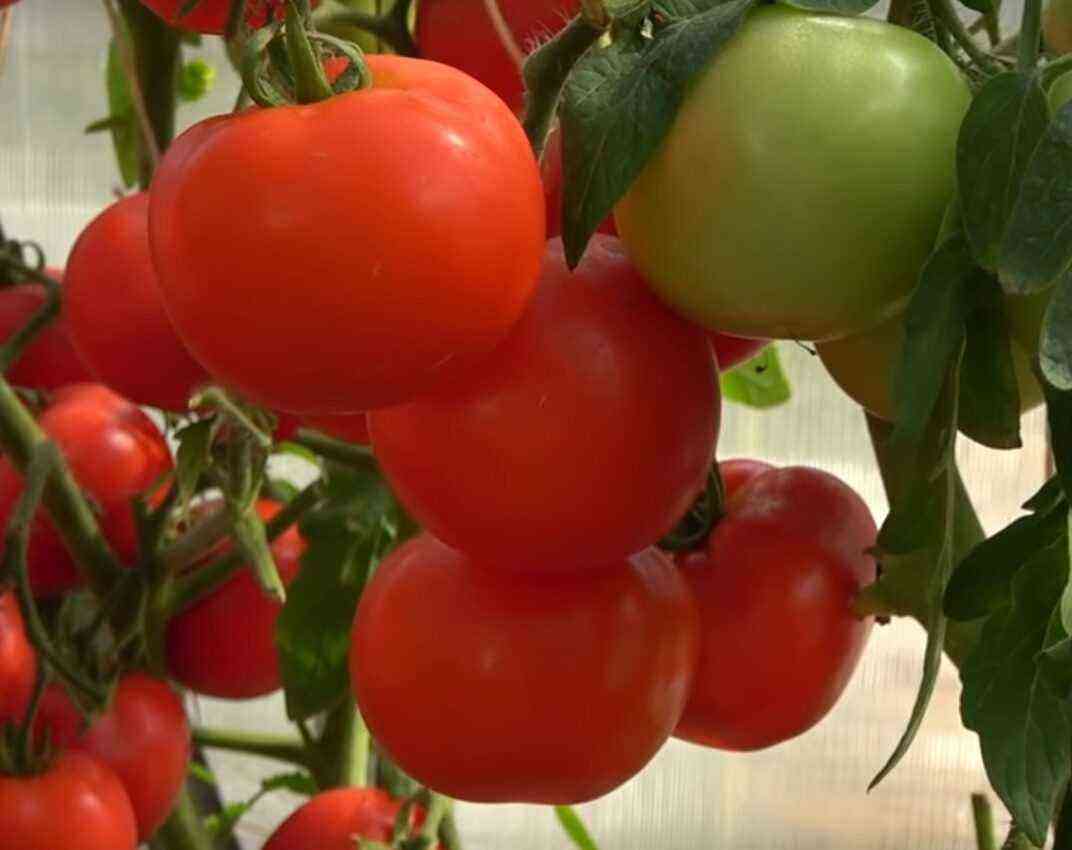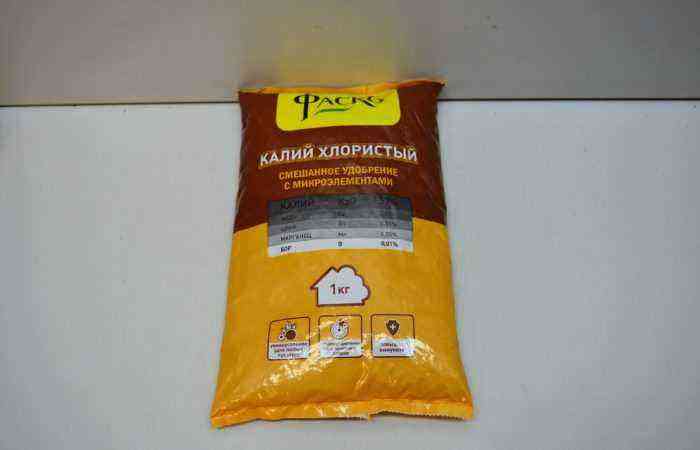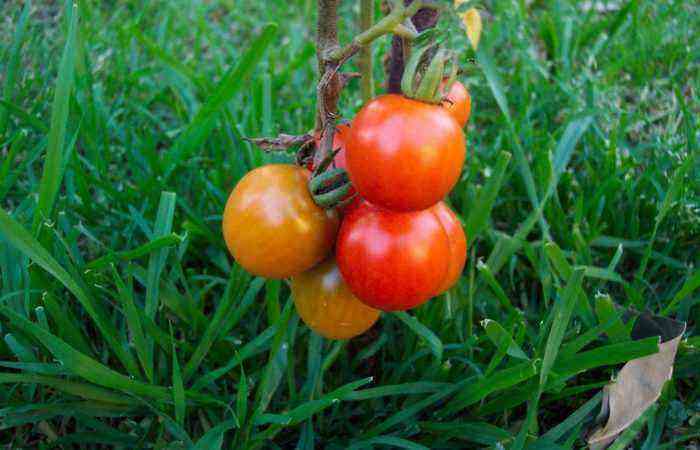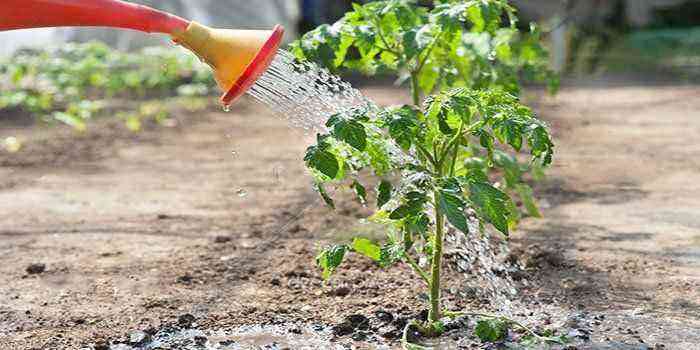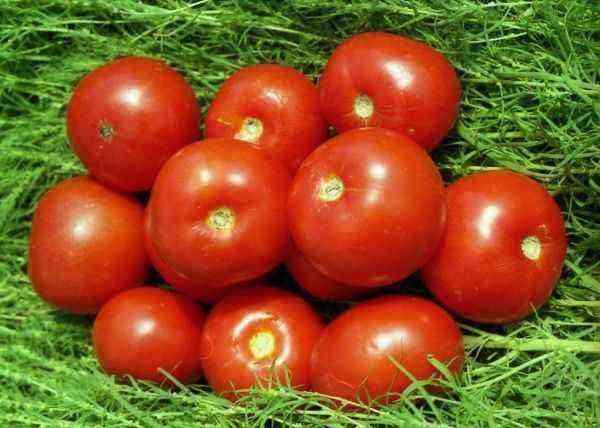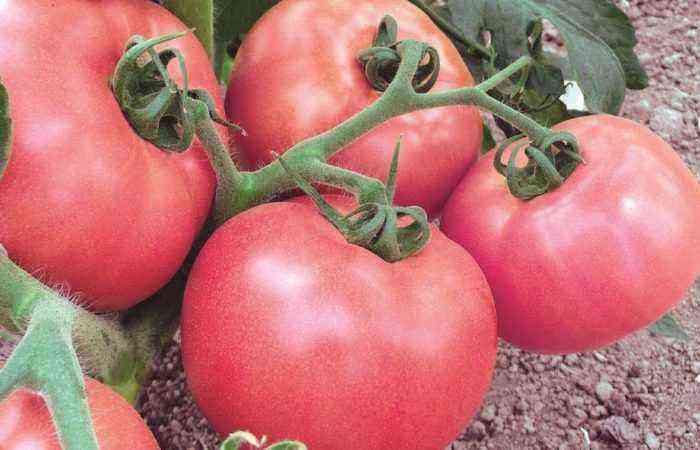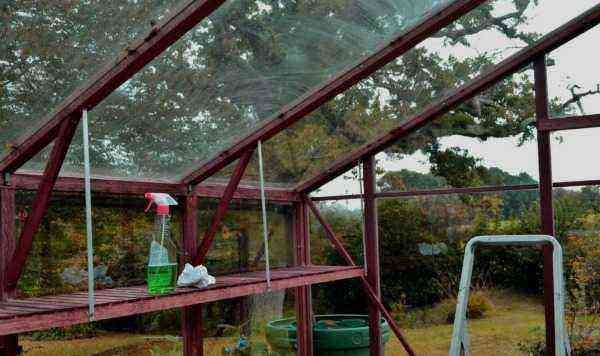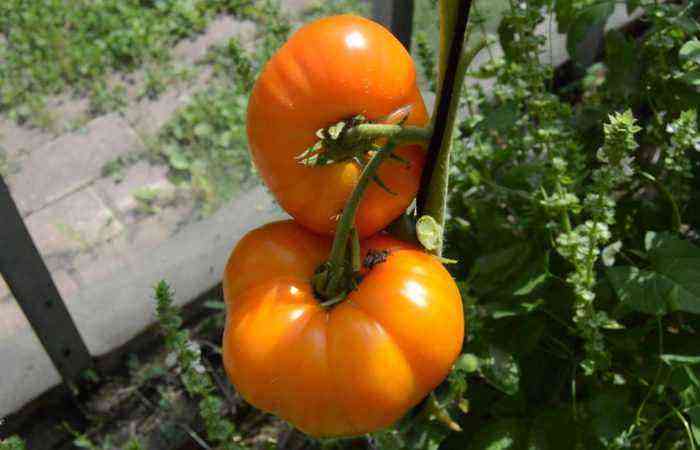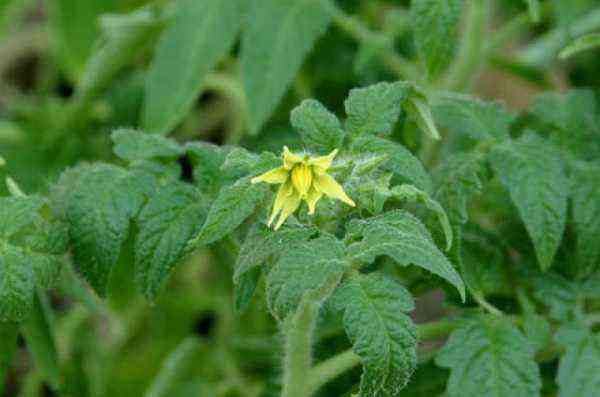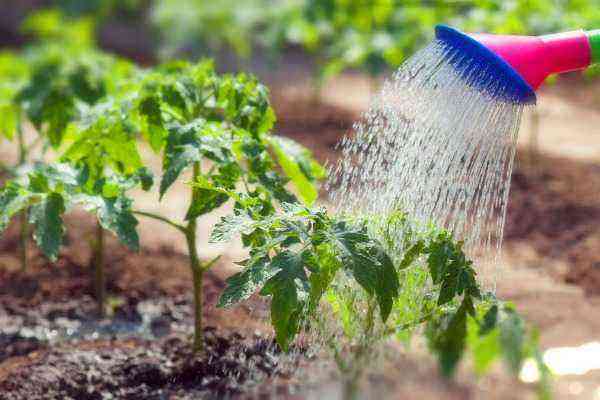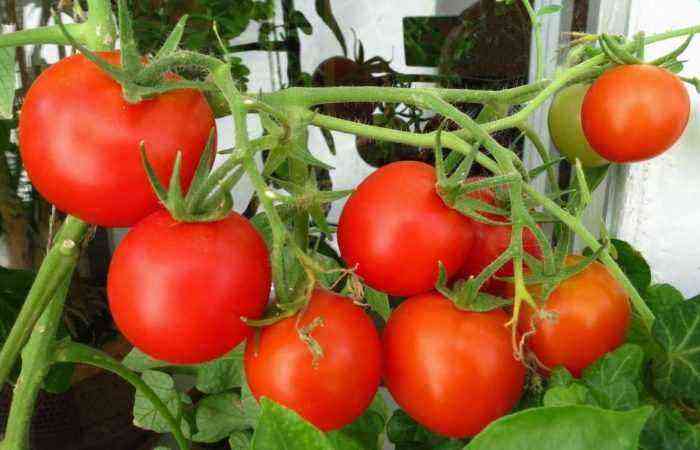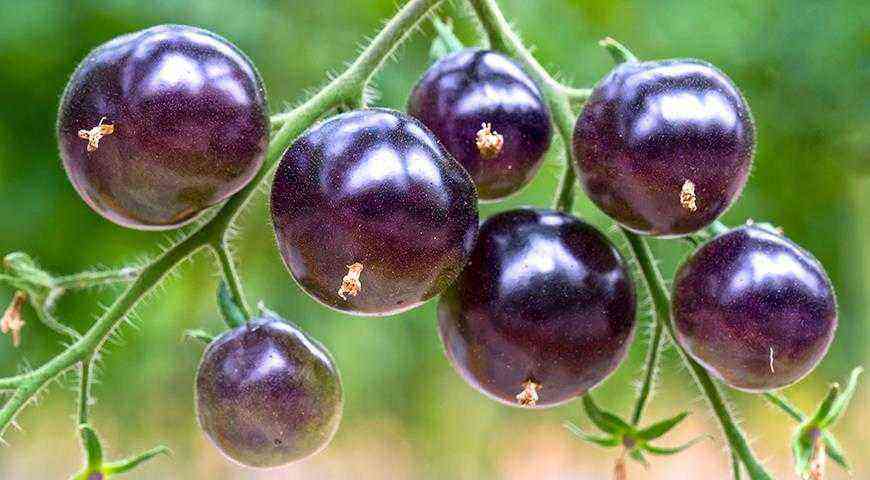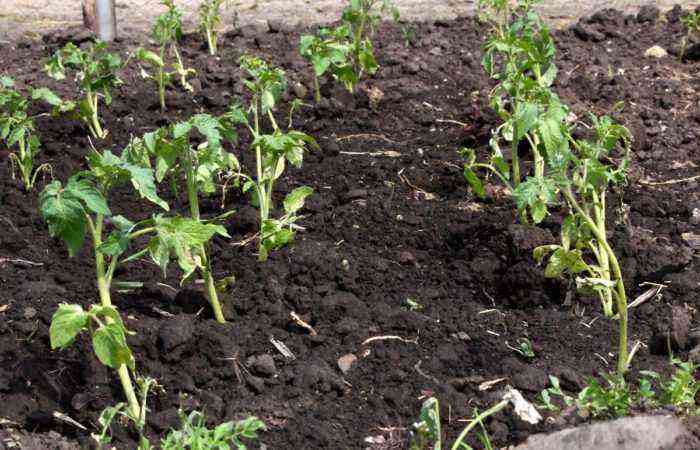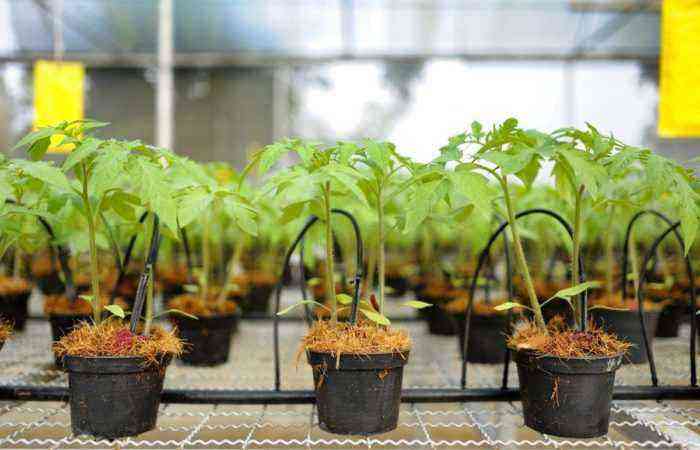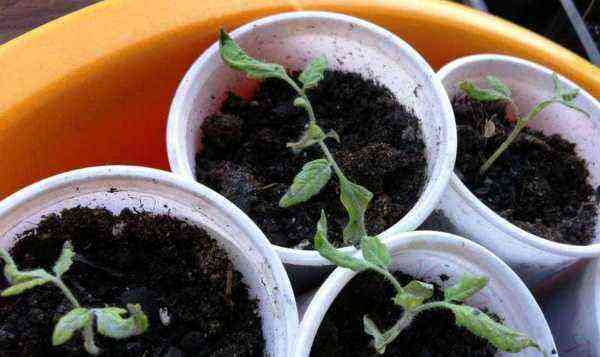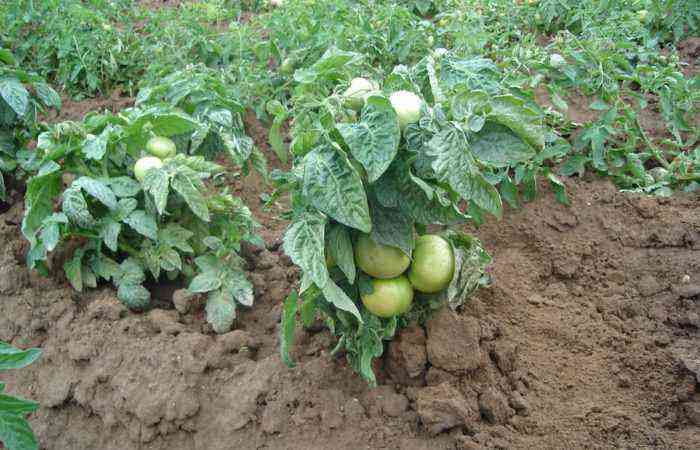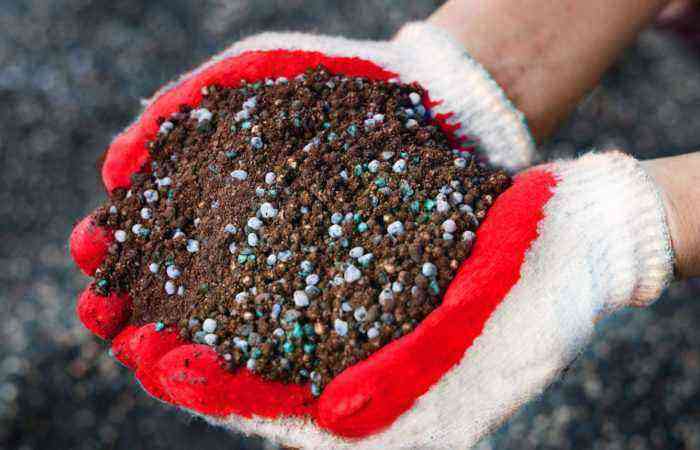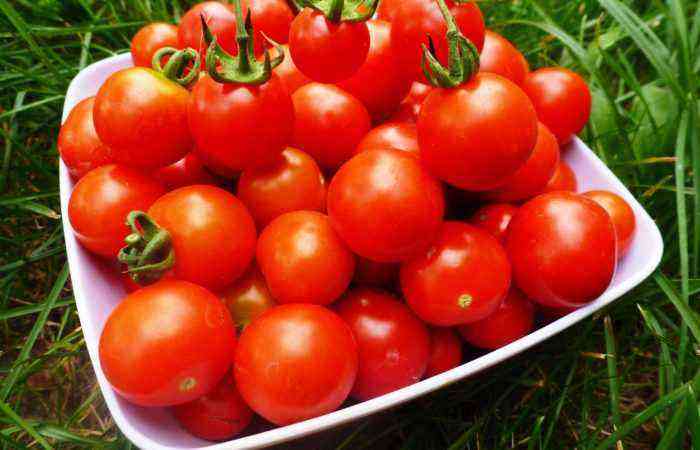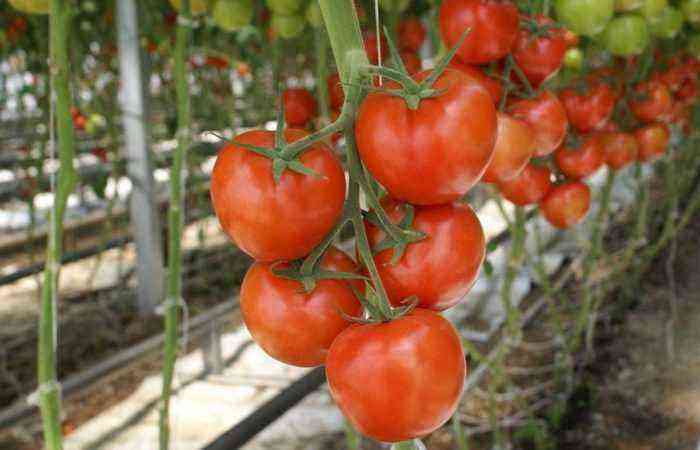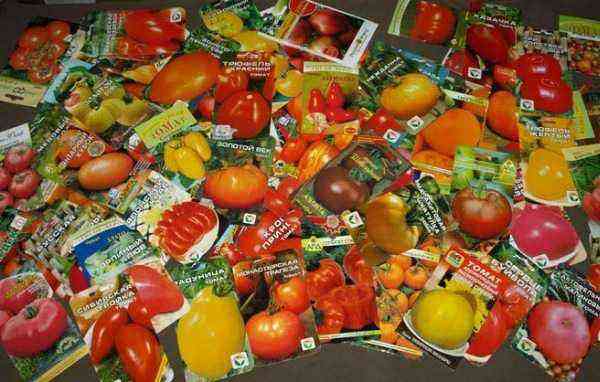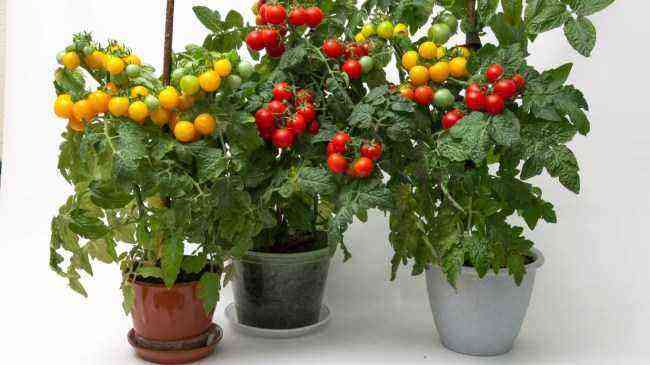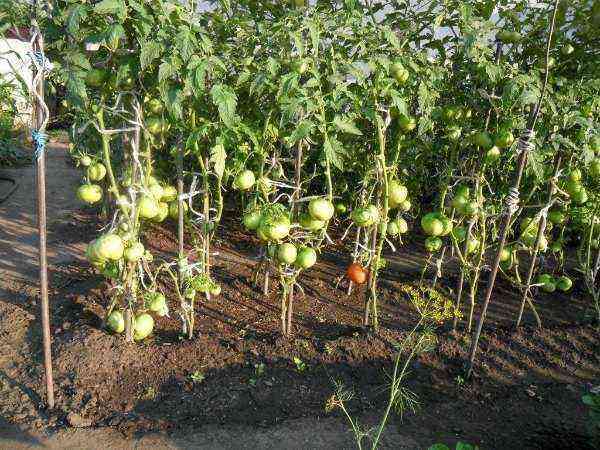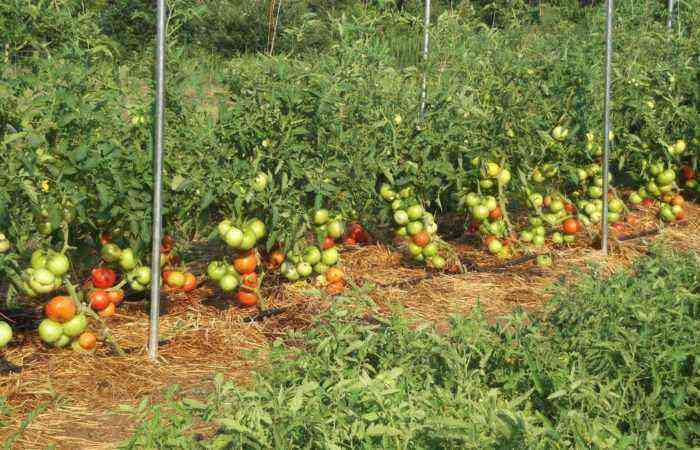Many gardeners independently grow tomato seedlings for their plot – this way you can save on seedlings and be as confident as possible in the variety. During the growth of seedlings, various problems may arise with them. The most common of these is the yellowing of the leaves on young bushes, the so-called chlorosis.
Causes of yellowing seedlings, how to determine
If the leaves of tomato seedlings began to turn yellow, it means that the plants do not feel well, something does not suit them. The leaf plate of a tomato in its normal state is green, since its cells contain the substance chlorophyll, which is necessary for the process of photosynthesis. In the event of a violation of the flow of a vital process, the color of the sheet changes, turns yellow.
Violation of the process of photosynthesis and, as a result, a change in the color of the leaf plate in a tomato seedling can be observed due to:
- non-compliance with the basic rules of care;
- incorrect composition of the soil;
- disease.
Before taking any measures to save young tomatoes, you need to accurately determine the cause of the yellowing of the foliage. In this regard, it makes sense to consider each of them in more detail.
Failure to care for seedlings
This concept in this case refers to unregulated watering and neglect of the need for good lighting.
- If the soil moisture is too high, then the foliage begins to turn yellow, gradually die off.
- The same thing happens if the bush does not have enough sunlight. Photosynthesis without sunlight is not carried out, and with a small amount of them, it slows down. As a result, developing chlorosis.
In March, with an increase in daylight hours, the bushes located on the windowsill receive a sufficient amount of sunlight. If the tomatoes were sown in February, there may be a problem with poor lighting.
Incorrectly composed soil
This group includes two main causes of leaf chlorosis in young seedlings – lack of nutrients in the soil and too high acidity of the soil.
You can identify the lack of nutrition of tomatoes by the nature of the yellowing of the foliage. Below is a reference table showing signs of nutrient deficiency in seedling crops.
Element deficiency Nature of yellowing Potassium Chlorosis on the tips and edges of the leaves, the veins do not change color Nitrogen Yellowing appears on the tips of the leaf plates, passing to the veins Zinc The leaf becomes pale yellow, the veins stand out strongly against the general background of the plate Iron New leaves become smaller, old ones turn yellow, veins remain green Magnesium Yellowing is noticeable along the contour of the veins Manganese Foliage begins to turn pale: first old, then young plates Phosphorus When the element is deficient, the top of the bush turns yellow, the rest of the leaves turn purple. With excess phosphorus, the plate turns yellow completely, evenly Calcium Leaves turn yellow, curl
If the tomatoes lack several elements at once, the foliage is covered with a yellow-green mosaic, the stem of the bush is pulled out.
Another cause of chlorosis associated with the composition of the soil is considered to be its increased acidity. Often, improperly composed soil for sowing seeds or picking tomato bushes is used by inexperienced gardeners who decide to do it on their own.
A high content of peat creates an acidic environment in which tomatoes cannot develop normally. As a result, the seedlings gradually turn yellow.
In addition, if vermiculite or sand was not introduced into the soil for loosening, after each irrigation, the earth sticks together in a lump and does not allow thin roots to grow normally and absorb nutrients. A signal to the gardener will also be a change in the green color of the foliage to yellow.
Disease
The appearance of some fungal diseases of the culture can also be recognized by the yellowing of the leaves.
Signs of a specific disease caused by fungi are summarized in a table.
Name of fungal disease Signs of manifestation Fusarium wilt Foliage turns yellow, plants look lethargic with normal regular watering. Black leg It is characterized by yellowing of the first, cotyledon leaves of the seedling at the initial stage of development. If you neglect attempts to save the seedlings, they will die. Brown spotting (cladosporiosis) The leaves of the lower tier are covered with vague yellowish spots on the upper side, and a gray-brown coating on the reverse side. As a result of the development of the disease, the foliage turns brown, dries out and falls off.
Other reasons for the yellowing of the foliage of tomato seedlings can be:
- wrong transplant;
- damage to the root system of the seedling, for example, when picking or loosening;
- too small volume of planting capacity, which is observed during late picking of sprouts or their transplantation into shallow cups.
When growing seedlings on a windowsill, you need to check if there is a draft passing through the bottom of the window frame.
The fact is that the cause of yellowing of the foliage of the bushes may be due to the temperature difference in the lower and upper parts. If a draft blows the zone of the cup, stem, you need to put the containers higher or try to eliminate the draft.
What to do, how to help tomato seedlings
What to do if the tomato bushes on the windowsill change color from green to yellow?
After identifying the cause of this phenomenon, decisive action must be taken immediately.
Yellowing of seedlings due to waterlogging of the soil and poor lighting
If, when checking the soil for moisture (you need to check the soil in the lower layers with your hand), it turned out to be damp, it means that the plants were flooded and do not need to be watered in the near future. The soil is gently loosened, watering is stopped until the earth in the cup is completely dry.
If the tomatoes are poorly lit (usually seedlings experience a lack of light when seeds are sown early), it becomes necessary to additionally illuminate the seedlings with a fitolamp. The light day of young tomatoes should be at least 10 hours.
If the seedlings turn yellow from a lack of nutrients
Seedlings that are deficient in nutrition should be fed with a water-soluble fertilizer containing the missing element.
Top dressing options, depending on the lack of a particular element, are given in the table.
Element deficiency Feeding options Potassium 2 g of potassium sulfate per bucket of water; 50 ml of potassium humate per bucket of water Nitrogen
15 g of carbamide (urea) per bucket of water; 20 g ammonium nitrate per bucket of water
Zinc 1 g zinc sulfate per 2 liters of water Iron
1 g of iron chelate per 1 liter of water (watering under the root); 1 g of copper sulphate per 2 liters of water (spraying on the leaf)
Magnesium 2 g of magnesium sulfate per 1 liter of water Manganese 1 g of manganese sulfate per 2 liters of water Phosphorus 1 glass of superphosphate is added to 1 liter of boiling water, infused for 12 hours, then the volume of the working fluid is adjusted to 10 liters with ordinary water Calcium Watering with a solution of calcium nitrate, taken in calculation of 25 g per bucket of water
Soil acidity
If problems with discoloration of tomato foliage are associated with soil acidity or its structure, it is necessary to transplant the bushes into a new soil.
You can make it by mixing peat, soddy soil, humus and sand in a ratio of 2: 1: 1: 0,5, respectively.
To deoxidize peat, an additional glass of wood ash is added.
Seedlings affected by fungal diseases
When affected by fungal diseases, seedlings are treated with fungicide solutions.
One of the most popular, effective and inexpensive means is Fitosporin.. The solution is prepared, diluted with 200 g of the drug in 400 ml of water. For the efficiency of the solution to be high, the water temperature must be at least +150C, but not higher than +350C.
Yellowing of leaves after picking
If the leaves turn yellow after picking, you should just wait a few days and take care of the bushes in normal mode. After a short period, they adapt and become green in color.
Immediate action after identifying the cause of the yellowing of the leaves of tomato seedlings will help save the bushes and return them to their former healthy appearance.
It should be noted that in many cases the foliage affected by chlorosis will no longer acquire a green color, but the new leaves will be healthy.
Prevention of yellowing tomatoes
Yellowing leaves can seriously weaken tomato seedlings, slow down development, which negatively affects yields at the end of the season.
Preventive measures that prevent yellowing of the foliage of young tomatoes include:
- compliance with the requirements of the crop for cultivation – to ensure good illumination, optimal temperature, air humidity and regular, but moderate watering;
- high-quality soil preparation before sowing and picking – adding loosening components, observing acidity close to neutral;
- timely balanced feeding of seedlings;
- dressing seeds and substrate before sowing and transplanting fungicides, for example, Fundazol (1 g of the drug is diluted in 1 liter of water);
- preparation of suitable landing containers with drainage holes;
- watering tomatoes only with warm settled water.
It is much easier to prevent the appearance of yellowness on the foliage of tomatoes than to then look for the cause of its occurrence and take measures to save the seedlings. Prevention in this case is very important.
What to do if the lower leaves of tomatoes turn yellow – video
Foliage on tomato seedlings can turn yellow even among experienced gardeners. This phenomenon may be an absolutely natural reaction to a transplant and not pose a particular danger, but in some cases such a signal forces an active struggle for the healthy state of the bushes.
Therefore, it is impossible to neglect the yellowing of the aerial part of the seedlings: you need to carefully examine the nature of the yellowing and the specific lesions, identify the cause of this phenomenon and, if necessary, take decisive action.
